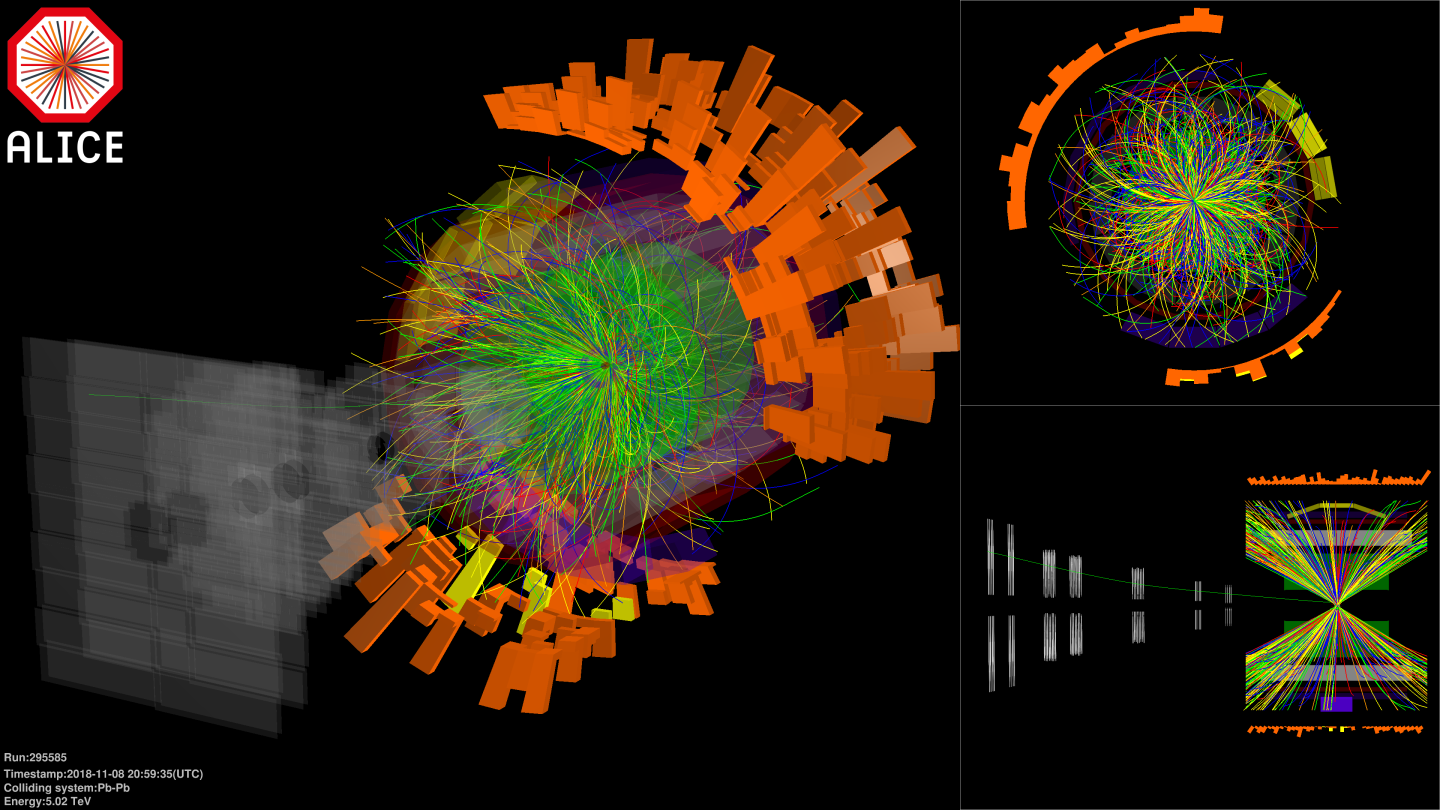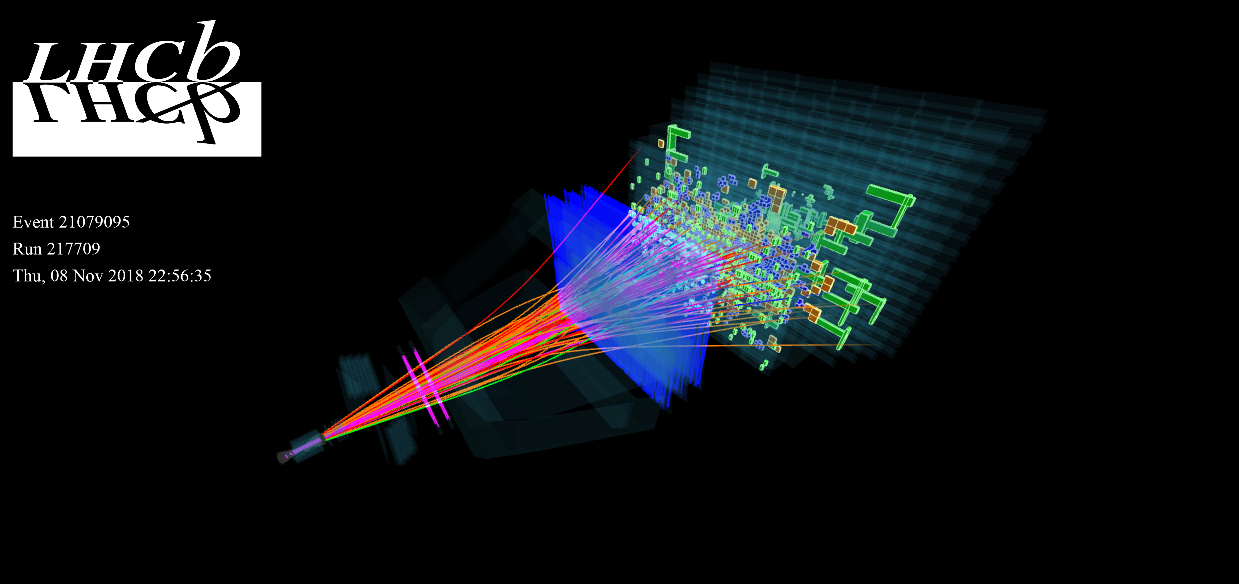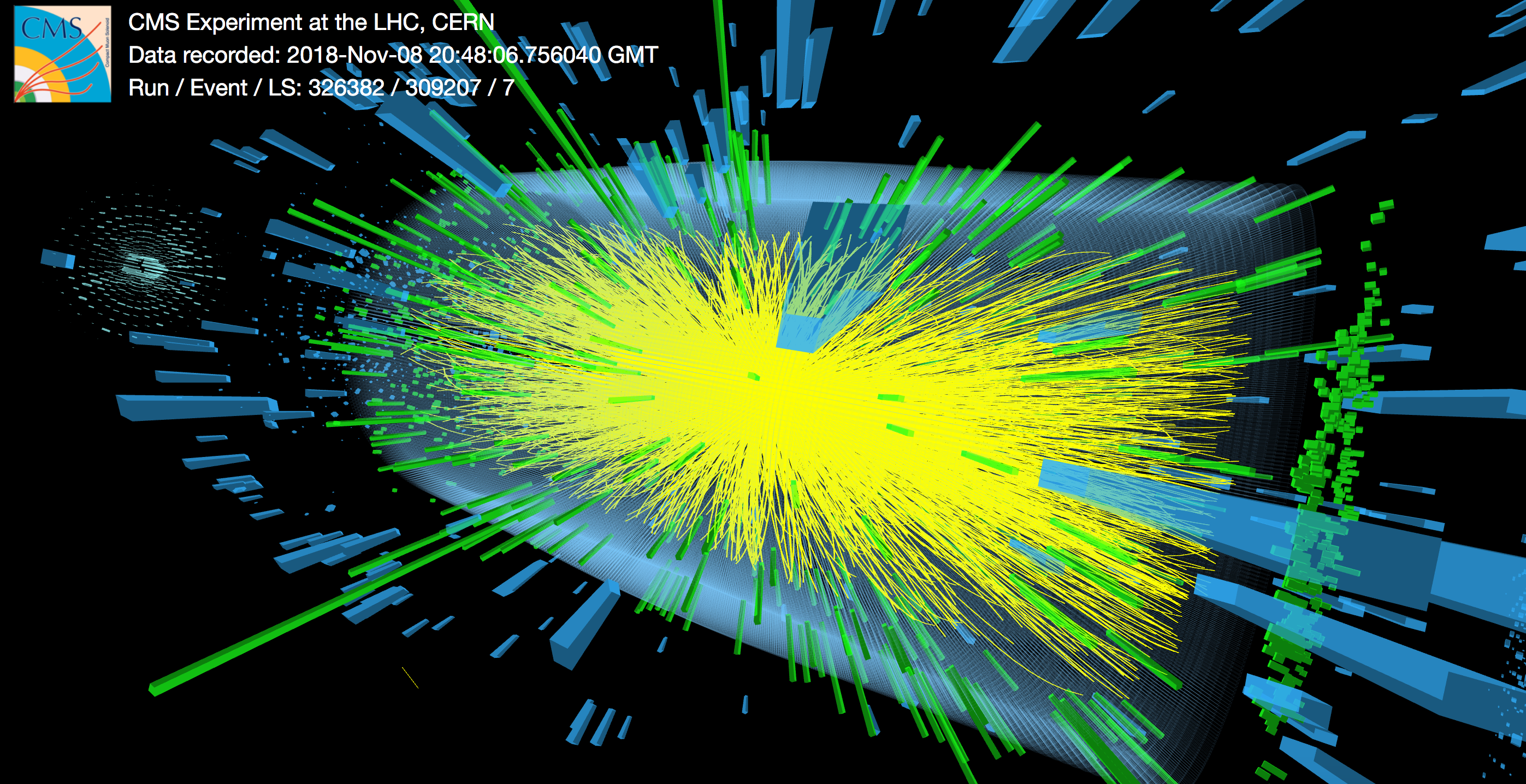Time for lead collisions in the LHC
World science, 09 November 2018
The lead ion run is under way. On 8 November at 21:19, the four experiments at the Large Hadron Collider – ALICE, ATLAS, CMS and LHCb – recorded their first collisions of lead nuclei since 2015. For three weeks and a half, the world’s biggest accelerator will collide these nuclei, comprising 208 protons and neutrons, at an energy of 5.02 teraelectronvolts (TeV) for each colliding pair of nucleons (protons and neutrons). This will be the fourth run of this kind since the collider began operation. In 2013 and 2016, lead ions were collided with protons in the LHC.
Collisions of lead nuclei will allow physicists to study specific phenomena such as quark-gluon plasma, a state of matter that is thought to have existed during the very first moments of the Universe, when the temperature was so high that quarks and gluons were not confined by the strong force into protons and neutrons. The previous runs with lead nuclei have already produced a vast amount of data about the properties of quark-gluon plasma. Evidence of many other phenomena, including light-by-light scattering, has also been found in heavy ion collisions.
 The first lead-lead collisions of 2018 send showers of particles through the ALICE detector (Image: ALICE/CERN)
The first lead-lead collisions of 2018 send showers of particles through the ALICE detector (Image: ALICE/CERN)
 Event display from the first lead-lead LHC collisions in 2018, recorded by the LHCb detector. (Image: LHCb/CERN)
Event display from the first lead-lead LHC collisions in 2018, recorded by the LHCb detector. (Image: LHCb/CERN)
 One of the first lead-ion collisions in 2018 recorded by the CMS detector. (Image: CMS/CERN)
One of the first lead-ion collisions in 2018 recorded by the CMS detector. (Image: CMS/CERN)